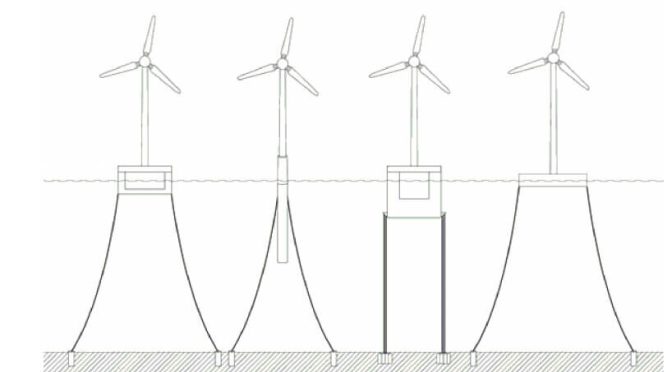At the American Clean Power’s (ACP) Offshore WINDPOWER Conference last month, Bureau of Ocean Energy Management (BOEM) Director Amanda Lefton announced the first ever offshore wind energy lease sale for the West Coast. Scheduled for December 6, the upcoming auction will be the first sale to support commercial-scale floating offshore wind energy development in the United States. This announcement comes on the heels of an injection of tax credit certainty in the newly-enacted Inflation Reduction Act in August, a major step toward leasing offshore wind in the Gulf of Mexico in October, and the start of offshore construction for the first utility scale offshore wind project in the U.S. in November.
With national goals to achieve 30 gigawatts (GW) of offshore wind by 2030, these are necessary early steps in order for the offshore wind industry to be able to play a vital role in establishing U.S. energy independence, creating thousands of good-paying jobs, and providing our communities with clean, safe, and reliable energy. But we know we can’t stop there. Deeper waters that require floating foundations are home to two-thirds of America’s offshore wind energy potential and represent a vast, untapped field for significant growth. Only a few floating offshore wind farms have been constructed in Europe and Asia so far, and the federal government’s recent commitment to invest in a “Floating Offshore Wind Shot” and deploy 15 GW of floating offshore wind by 2035 will position the United States as a global leader in floating offshore wind energy.
BOEM’s California lease sale is the first step to operationalize these ambitious goals. BOEM will offer five leases that total approximately 373,268 acres on the Outer Continental Shelf off California’s Central and North Coasts. These areas have the potential to produce over 4.5 GW of offshore wind energy, power more than 1.5 million homes, and support thousands of new jobs. This lease sale represents the culmination of years of coordination among federal and state governments, unions, environmental groups, local stakeholders, and the offshore wind industry.
Momentum is already building. Soon after the announcement, local officials at the Port of Humboldt Bay signed an agreement with Crowley’s Wind Services Group to exclusively negotiate to be the developer and operator of the Humboldt Bay Offshore Wind Heavy Lift Marine Terminal. The terminal will be California’s first hub for installations, which will play a critical role in offshore wind development and a pivotal part in reaching both federal and state climate goals.
But more leasing and more projects are needed to ensure a durable West Coast floating wind supply chain and achieve state and national clean energy targets. The next opportunity will be a BOEM lease sale off the south coast of Oregon that is anticipated to take place in late 2023 and could supply more than 3 GW of carbon-free energy into that state’s grid. Further down the road, we will need to see another round of leasing off California in order to meet the state’s 25 GW goal established under state law A.B. 525. We may even see offshore wind spreading up the coast to Washington State to take advantage of the robust wind resources in the Pacific Northwest.
California has long been a leader in developing our modern domestic energy infrastructure – and now, with floating offshore wind, the West Coast has the potential to propel the United States as a leader in this emerging technology and shape the global energy transition while cultivating energy independence, reducing carbon emissions, and creating tens of thousands of full-time American jobs.
Author:
VP, Offshore Wind


